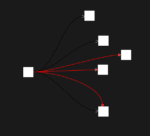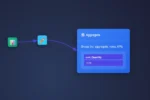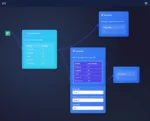Edge computing solutions are rapidly reshaping how businesses manage high-velocity data ecosystems. With countless IoT devices and sensors generating a relentless flow of events, the capacity to aggregate, filter, and transmit critical information to cloud or data center environments is a linchpin for achieving real-time insights and decisive action. At Dev3lop, we specialize in scalable data architectures that empower organizations to seamlessly collect, aggregate, and stream event data from the edge—all while maximizing efficiency, data quality, and downstream analytics potential. In this article, we’ll illuminate the business benefits and technical considerations that define effective edge device event aggregation and uplink streaming, setting a clear path forward for innovative data-driven organizations.
Why Edge Aggregation Matters: Compress, Filter, Transform
At the heart of any robust edge computing strategy is the aggregation layer—a crucial middleware that determines what data gets prioritized for uplink. Devices and sensors generate raw streams that, if transported wholesale, would quickly bog down even the most scalable cloud data lakes and networks. Instead, intelligent edge aggregation compresses volumes, filters out redundant or irrelevant signals, and applies transformations that add real value—such as extracting summary statistics, identifying patterns, or tagging anomalies before the data even leaves its origin. Implementing these patterns is critical for meeting latency requirements in real-time outlier detection on streaming engines and ensuring future-ready analytics pipelines at scale. Simply put, edge aggregation enables organizations to do more with less, all while expediting critical insights and reducing overhead.
Technologies and Architectures: Event Processing at the Edge
The modern edge encompasses a spectrum of devices and platforms, from embedded controllers to full-fledged microservers. Architecting event aggregation requires making strategic technology choices—balancing offline-first capabilities, seamless networking, and robust processing frameworks. Solutions increasingly leverage embedded databases and pub/sub frameworks, while overcoming challenges related to handling polymorphic schemas when integrating with data lake environments. The goal? Building flexible event streams that facilitate upward compatibility with centralized repositories such as cloud data warehouses and lakes, taking inspiration from best practices around when to use a data lake vs. a data warehouse. The most effective architectures don’t just aggregate—they surface actionable intelligence, optimize transmission, and ensure your edge devices become a natural extension of your enterprise analytics practice.
From Edge to Enterprise: Uplink Streaming and Data Utilization
Data doesn’t just move—it tells a story. Uplink streaming is the process of feeding that narrative into your broader enterprise analytics fabric, unlocking new layers of meaning and operational value. Reliable uplink streaming hinges on protocols and pipelines designed for efficiency and fault tolerance. Organizations leveraging event-based uplinks can layer in advanced analytics, predictive modeling, and even novel approaches such as hyperdimensional computing to extract actionable insights with unprecedented speed. Moreover, the streaming architecture must account for compliance, privacy, and security—often utilizing synthetic data bootstrapping for privacy-preserving analytics or integrating statistical control methods. Success is measured by how swiftly, securely, and profitably edge data can be put to work in executive dashboards, operational workflows, and fit-for-purpose visualizations.
Business Impact and Pathways to Innovation
Organizations that harness edge aggregation and uplink streaming build a strategic moat around their data—accelerating time-to-value and enabling analytics that continuously evolve with business needs. The benefits aren’t only technical; they translate directly into customer experience gains, operational savings, and new digital products, particularly when paired with advanced techniques in analytics and SEO performance. As edge and cloud paradigms mature, expect to see even more innovation in managing schema complexity, controlling disclosure risk through statistical disclosure control, and visualizing outcomes for stakeholders. At Dev3lop, our mission is to help organizations turn edge data into a strategic asset—delivering innovation that scales, adapts, and unlocks true competitive advantage.
Thank you for your support, follow DEV3LOPCOM, LLC on LinkedIn and YouTube.

























